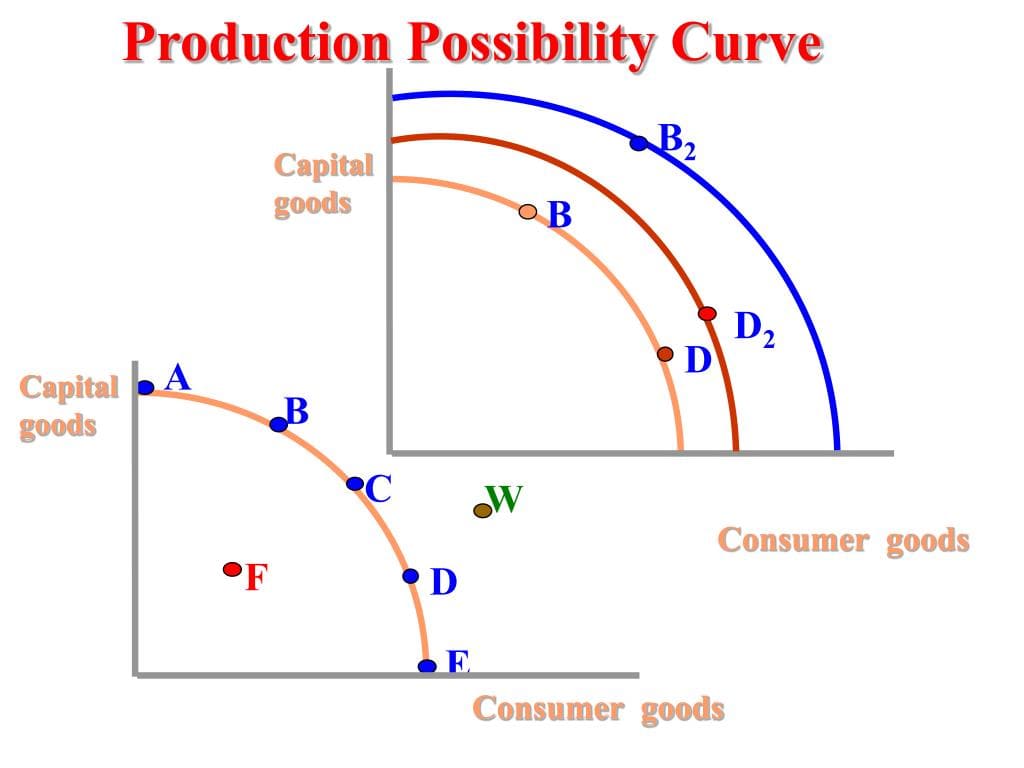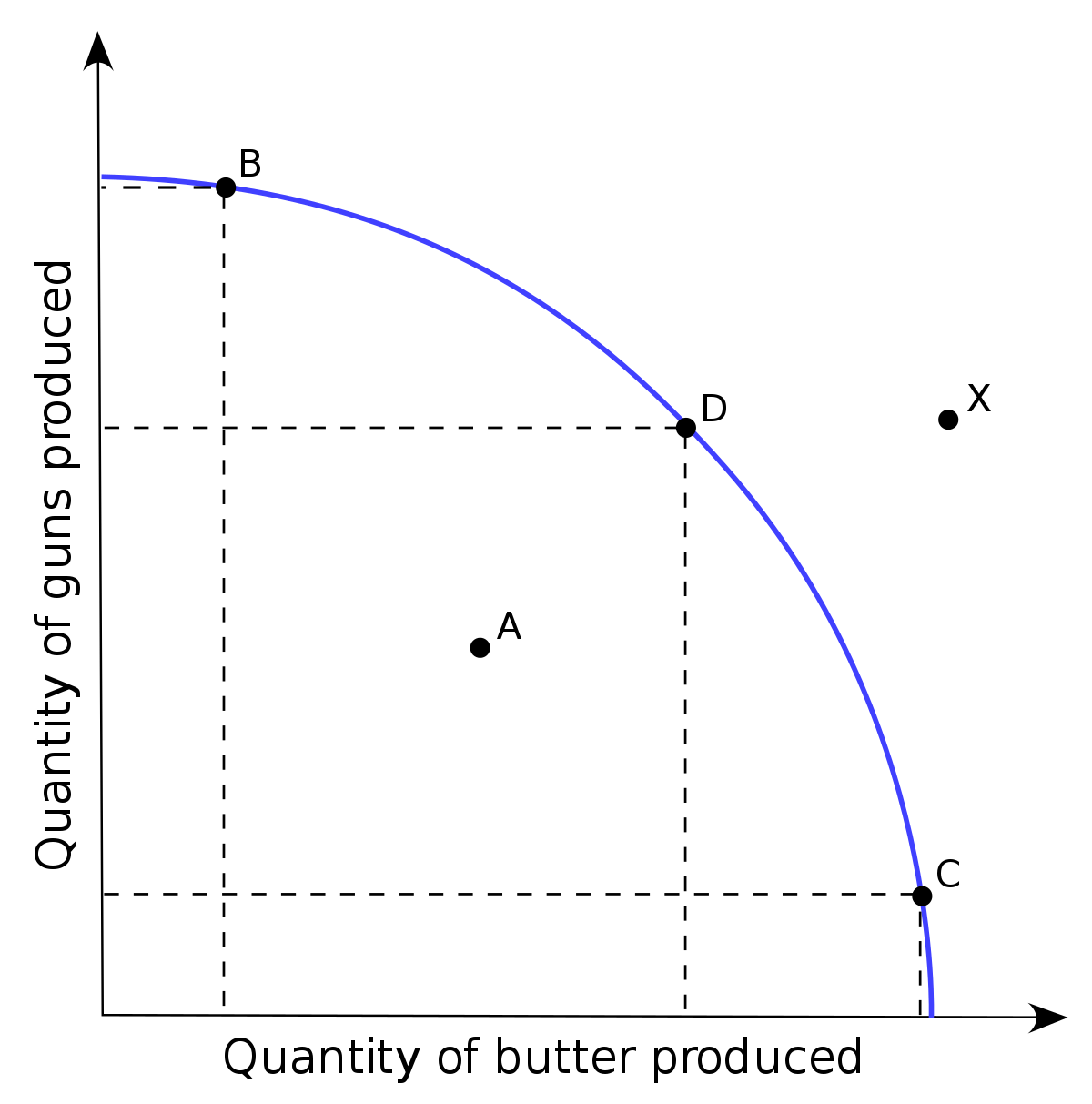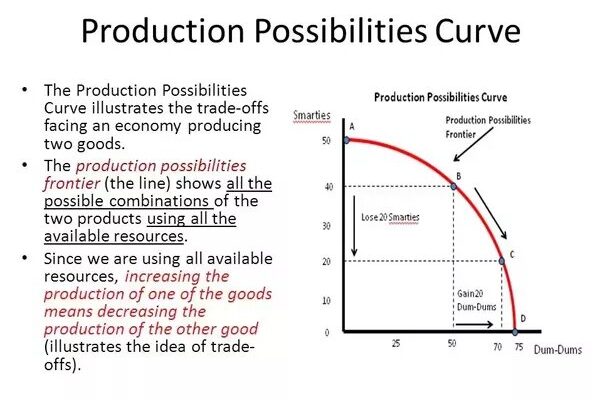Table of Contents
Production possibilities curve definition economics, based on a fixed amount of input, a production possibilities curve measures the maximum amount of goods that can be produced. Inputs include natural resources (including land), labor, capital goods, and entrepreneurship. In general, manufacturing involves a combination of all four.
Get a better understanding of how the production possibilities curve works.
production possibilities curve definition economics
A production possibilities curve is a representation of the most efficient way to produce a pair of goods in economics. On the curve, each point illustrates how much of each good would be produced if resources were diverted to making more of one good and less of another.

Measure of the trade-off between producing one good and another is the production possibilities curve.
- Alternate name: Transformation curve
- Acronym: PPC
A country may produce 20,000 oranges and 120,000 apples, for example. Point A on the chart represents this. In order to produce more oranges, it must produce fewer apples. Point C shows that it can produce only 85,000 apples if it produces 45,000 oranges.
As a result of this trade-off, the curve illustrates the concept of opportunity cost. In order to produce more of one good, society must forfeit the opportunity to produce more of the other.
How the Production Possibilities Curve Works
In the production possibility curve, society’s choice between two goods is depicted. In a country where production possibilities are at the frontier, the standard of living is the highest since it is producing as much as possible with the resources it has. The amount produced must be inside the curve in order to utilize all the resources. On the chart above, this is point E.
In such a case, a recession or depression might be to blame. In such a case, there is less demand for either of the goods. It is also possible to have layoffs, which results in lower levels of labor being used and therefore lower production.
A production that is inefficient can be caused by a variety of reasons. The curve will be broken when an economy ignores its comparative advantage. The climate in Florida is ideal for oranges, and the climate in Oregon is ideal for apples. There is a comparative advantage for orange production in Florida and for apple production in Oregon. If Florida ignored its orange advantage and tried to grow apples, it would be wasting resources. The economy of the United States would operate within the curve, resulting in a decrease in standard of living.
In the same way, any point outside the production possibilities curve is impossible. It is impossible to create more of either of these goods within limited resources. See figure above.
The Shape of the Production Possibilities Curve

The curve of production possibility bends outward. As you can see, the highest point is attained when there is only one good produced on the y-axis and zero on the x-axis. In the chart, that’s Point A, where the economy produces 146,000 apples and none of the oranges.
When you produce all the goods on the x-axis and none of them on the y-axis, you have the widest point. According to the chart, point D is zero apples and 40,000 oranges are produced.
Any point between these two is a trade-off of some combination of both goods. That mix produces an economy that operates more efficiently. A particular resource is better suited to producing a particular good than another. Depending on the land, one can grow apples, while another can grow oranges. The best use of resources occurs when society directs their production toward each resource’s niche. As specialized resources become, the production possibility curve becomes bowed-out.
How the Production Possibilities Curve Affects the Economy
Economic decision-makers are not told how much good the economy should produce; they are only told what they must give up in order to produce more of another good.2 They must choose the sweet spot for their economy.
As the law of demand determines how much of each good to produce in a market economy, planners decide where the most efficient point is on the curve in a command economy. They will consider how to use labor to create full employment.
Economy leaders always want to move the production curve outward and to the right, which can only be achieved through growth.
It is imperative for the leaders to increase demand for either or both products. If that does not happen, then resources cannot be used to increase output.
According to supply-side economists, more resources can be added to shift the curve to the right. However, they will only succeed in creating underused resources in the absence of demand. However, increasing the labor force may provide some benefits. When the unemployed start working, their demand will continue to rise and the curve will move to the right. They must be compensated well enough to create a demand that shifts the curve outward. Also, there must be enough unemployed to affect the curve. Even if corporate taxes are cut, an economy in full employment cannot add new workers.
Resources can decrease, limiting growth. Unless one input is plentiful, no more goods can be produced, regardless of how high the demand is. Prices rise until the supply meets demand. Cost-push inflation occurs.
Comparative Advantage and Absolute Advantage
Using the PPF as a guide an economy may be able to produce all the goods and services it needs to operate for itself. However, when the benefits of trade are taken into account this may actually lead to an overall inefficient allocation of resources and hinder future growth.
By specializing a country can focus on producing the few things it does best rather than trying to do everything on its own.
Comparative Advantage
Each country in our example can produce one of these products more efficiently (and at a lower cost) than the other. It can be said that country A has a comparative advantage over country B in automobile production and country B has a comparative advantage over country A in cotton production.
Or the two countries could decide to specialize in the production of goods for which they have a comparative advantage. Both sides will be able to trade their specialized products with the other and both countries will be able to enjoy both products at a lower cost. The quality will also improve because every country is making it Do your best.
Determining how countries exchange goods produced by their comparative advantage (the best products) is the backbone of international trade theory. This method of exchange through trade is considered the optimal allocation of resources. This means that the national economy will theoretically no longer lack anything they need.
Like opportunity cost specialization and comparative advantage, it also applies to the way individuals interact in the economy. Very few people, at least in modern times, try to produce everything they consume.
Absolute Advantage
Sometimes one country or individual can produce more than the other even though the two countries have the same number of input. For example, country A may have the technological advantage that with the same amount of input (good land steel labor) the country can easily manufacture more Both cars and cotton are better than country B.
A country that can produce more of both goods at the same time is said to have an absolute advantage. Better access to natural resources can give a country an absolute advantage as can a higher level of skilled labor and overall technological progress.
However, a country cannot have an absolute advantage in everything it has to produce. It always requires trade.
read more:
